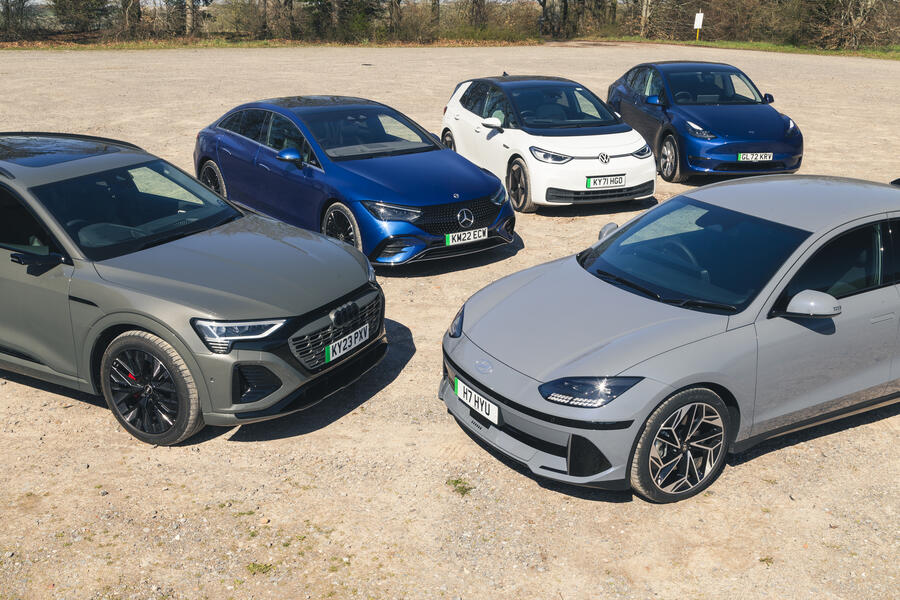Few initiatives are more game-changing for the modern-day automotive industry than the zero-emission vehicle (ZEV) mandate.
In fact, Mike Hawes, chief of the Society of Motor Manufacturers and Traders, has labeled the mandate “one of the most remarkable interventions in any industry ever”.
However dry and dull the ZEV mandate might sound, it’s a serious business for vehicles of all persuasions, including hybrids and electric cars.
It has caused car makers to build up entirely new teams of data analysts to manage compliance spreadsheets. And all this was only rubber-stamped towards the end of last year with just a few weeks’ notice.
Hawes’ description of the legislation, which creates a fine of £12,000 per non-compliant car sold over the limit, is a good temperature check for something that impacts and influences every single car sold in the UK and will continue to do so until at least the end of the decade.
What is the ZEV mandate?
Sitting comfortably? You might not be if you work for a car manufacturer, but you will want to know how it all works anyway.
A ZEV is defined as having zero CO2 emissions at the tailpipe and an electric driving range of at least 100 miles on the WLTP test cycle.
The ZEV mandate is an initiative that requires car makers to sell a certain number of electric vehicles each year.
The UK legislation requires car makers to sell an increasing proportion of ZEVs annually, starting at 22% in 2024 and hitting 80% in 2030.

A battery warranty of eight years or 100,000 miles must be provided as part of the mandate (so don’t fall for any manufacturer's advertising this as a perk; it’s an eligibility requirement), and if the battery falls below 70% capacity in that time, a replacement must be offered.
The ZEV mandate sits within the wider Climate Change Act and is loosely based on California’s approach to EV adoption. A key difference is that the Californian system has been tweaked multiple times in response to industry and market developments, and it allows for PHEVs, backed by incentives.
It’s a legislation that runs far deeper than the headline of a sliding scale of EV sales that each car maker must hit each year. It’s all part of the UK’s legislated commitment to be net-zero on carbon emissions by 2050.
Working backwards from that, the proposed ban on the sale of any new vehicle that isn’t an EV was set for 2035, because the average life of a car on the road is 15 years.
For that reason, in its effort to keep the UK on track to hit its carbon-reduction targets en route to 2050, the government has focused most strongly on road transport and taken the more drastic approach of banning the sale of non-EVs, rather than simply incentivising electric cars.
It removed its incentives on the purchase of new EVs in 2021, although favourable BIK tax rates on EVs remain for company car users.
Changes to the ZEV mandate in 2025
In April 2025, the UK government announced major changes to the ZEV mandate, relaxing incoming rules in an attempt to reassure the industry.
The changes mean manufacturers can continue to sell full hybrid (HEV) and plug-in hybrid (PHEV) cars until 2035.
According to the government, this will “ease the transition and give the industry more time to prepare”. That said, there’s still no word on the rules for mild hybrids (MHEVs) and range-extender electric vehicles (REXs or REEVs).
Low-volume manufacturers - those that produce fewer than 2500 cars per year - also won't be required to hit an 80% EV sales mix by 2030. This includes British brands Aston Martin, Bentley, Rolls-Royce, Morgan and McLaren.

The main sales mix targets of the ZEV mandate have remained unchanged: car makers still need to hit an EV sales mix of 28% this year and 80% by 2030.
However, the associated fines for missing the target have reduced from £15,000 to £12,000 per car.
Pure ICE vans can also remain on sale until 2035, alongside hybrid and plug-in hybrid vans.
The government has also modified the Non-Zero Emission Car CO2 Trading Scheme (CCTS) for additional support.
This is where a car maker can offset sales of non-EV models by exceeding CO2 reduction targets, reducing their EV sales mix target for that year. For more information on the CCTS scheme, read on.
Annual mandate targets from 2025 to 2035
The ZEV mandate sets limits on the maximum percentage of non-EVs that each manufacturer can sell.
It dictates that 22% of sales must be EVs in 2024, 28% in 2025, 33% in 2026, 38% in 2027, 52% in 2028, 66% in 2029 and 80% in 2030. (There are similar targets for vans, starting at 10% in 2024 and reaching 70% in 2030.)
It's only indicative after that, though: 84% in 2031, 88% in 2032, 92% in 2033, 96% in 2034 and 100% in 2035.
Previous legislation dictated that car makers met a fleet average for CO2 emissions. This has now been rolled into the ZEV mandate, revoking European Union legislation on CO2.

Called the Vehicle Emissions Trading Schemes (VETS), it mandates a growing proportion of EVs each year while also ensuring that CO2 emissions from non-EVs don’t increase.
The CO2 part of VETS is based on a 2021 baseline figure for each manufacturer’s non-EV fleet average CO2 emissions.
So long as it was compliant in 2021, a manufacturer can use either its actual or target CO2 figure as its reference, whichever is higher.
And any future overperformance against this target can be transferred into a limited number of additional non-EV allowances in the first three years, potentially reducing the number of EVs that the manufacturer is required to sell in the earlier period of regulation.
Car makers can also 'pool', ‘bank’ and ‘borrow’ their emissions, which is where it starts to get complicated.
To deal with the easy part first, ‘connected entities’ – Stellantis or the Volkswagen Group, for example – are able to pool together. Do so and manufacturers must pool on both ZEV and CO2 and take a CO2 baseline average accordingly.
Whether it’s a connected entity or on its own, a manufacturer can then bank and borrow.
Banking allows it to quite literally bank overperformance on ZEV mandate sales on a rolling three-year basis from 2024 to 2030 to allow for a hiccup in a future year.
Borrowing is the inverse: if a manufacturer knows its game-changing mass-market EV is coming next year, it won’t mind underperformance in the current year.
However, it can borrow only up to 75% of its mandated 22% EV share in 2024, 50% in 2025 and 25% in 2026. To put it another way, a car maker at a bare minimum needs 5.5% of its sales mix to be EVs this year.
Any borrowing also attracts a 3.5% compound interest rate, meaning targets will only become harder to hit in future years. Think of Ford and Toyota here. Borrowing will last for three years.
No car maker has yet gone on the record with what its actual ZEV mandate figure is after using CO2 performance to offset it down from 22%, but one car maker’s is understood to be as low as 8%. More typical numbers quoted to Autocar have been 18-20%.
Whatever figure a car maker has been given based on 2021 is locked in for three years, and the proportional gap to the mandated EV figure remains the same each year.
Adding further complexity is that car makers can trade between the ZEV mandate and the CO2 requirements and vice versa.
Overperformance on the ZEV mandate earns a manufacturer credits for CO2 compliance. This could allow it to sell a light-performance combustion car from a sub-brand, for example. It has three years to utilise these credits.
It’s less financially beneficial to trade CO2 credits in order to achieve ZEV compliance, because ZEV is seen as the dominant part of the legislation.
Imagine it as differing currency exchange rates. Still, for the first three years of this scheme, overperformance on CO2 reduction will reduce a manufacturer’s ZEV mandate target, although this is capped at 65% in 2024, 45% in 2025 and 25% in 2026.
This part of the scheme is best thought of as similar to the 2021 baseline set for CO2 being used from this year: overperformance on CO2 will help reduce a manufacturer’s ZEV target.
The headline in all of this is that even after a manufacturer has pooled, banked, borrowed and traded, for every car it sells short of its ZEV target in a given year, it will be fined £15,000 (although this technically isn’t a fine, as paying this amount is a legitimate way of complying with the legislation, however unpalatable).
This figure is based on what’s considered to be the ‘saving’ to a car maker of building an ICE car versus a ZEV, as well as a penalty for its excess CO2 emissions.
The final catch, though, is that manufacturers can buy credits from others that overperform on the ZEV mandate in order to comply. JLR has been on the record saying that it will be buying credits to comply, for example. The likes of BYD, MG and Tesla can expect to do a good trade here. The going rate for a credit is unknown, other than it won’t cost more than £14,999.99.
If a manufacturer buying its way out of larger fines seems counterintuitive, understand that it’s simply a mirroring of other sectors in which carbon trading is the norm.
Manufacturers that sell fewer than 2500 cars in the UK per year are exempt from the ZEV mandate and manufacturers that sell fewer than 1000 are also exempt from the CO2 regulations.
Those selling between 1000 and 2500 therefore must still meet CO2 targets, though, and in the indicative legislation for 2030-2035, the end of new ICE car sales will be applied across the board, regardless of a manufacturer’s size.
Don’t go looking for any loopholes, because there aren’t any. One source described the legislation as “so watertight it’s as if a car maker had written them...”
However, there is a provision in the legislation for a review in 2026, and the percentage targets could then be altered. All flexibilities, banking and borrowing will end at that point too.
"This has to work, as road transport is the [UK’s] biggest-emitting sector,” said Hawes.












Join the debate
Add your comment
People are making a lot of fuss about what i see as (almost) no change at all. So to start with after 2030 we had undefined hybrids, then Sunak said it can be any ICE, and now we are told it can be normal hybrids for definite. However, we are still talking about only 20% of the market in 2030 (and i assume reducing through to 2035), so these are still going to be the expensive cars the manufacturers can make the most profit on. We are not going to see city cars continue to be sold, and although a tiny proportion of the market, what about sports cars? Currently there is not one full hybrid for sale with a manual box. Maybe someone like Toyota will invent something, but i dont think these rule changes move the dial one bit for normal people who want an affordable,relaible, fun car. Oh, and dropping the fine to £12k. well that might help Bentley, but its not going to see any more Kia Picanto's being sold is it!
I understand reducing the fine, and giving hybrids an extra couple of years might have been reasonable - but the full five years, with a complete exemption for that period for commerical vehicles, is very disappointing. Okay Trump has just unleashed hell on the global economy, and something had to be done to give the industry a chance to survive the trade meltdown that will result, but throwing the environment under the bus is just giving him another (insane) thing he wants.
It's all about getting your vote then they renange, THEY all do it!
I followed a 2011 Merc E Class diesel in traffic this morning. It was chucking out plumes of disgusting diesel fumes like an out of control bonfire. If the ZEV mandate means we have to put up with less of this pathetic 'diesel engineering', I'm all for it.